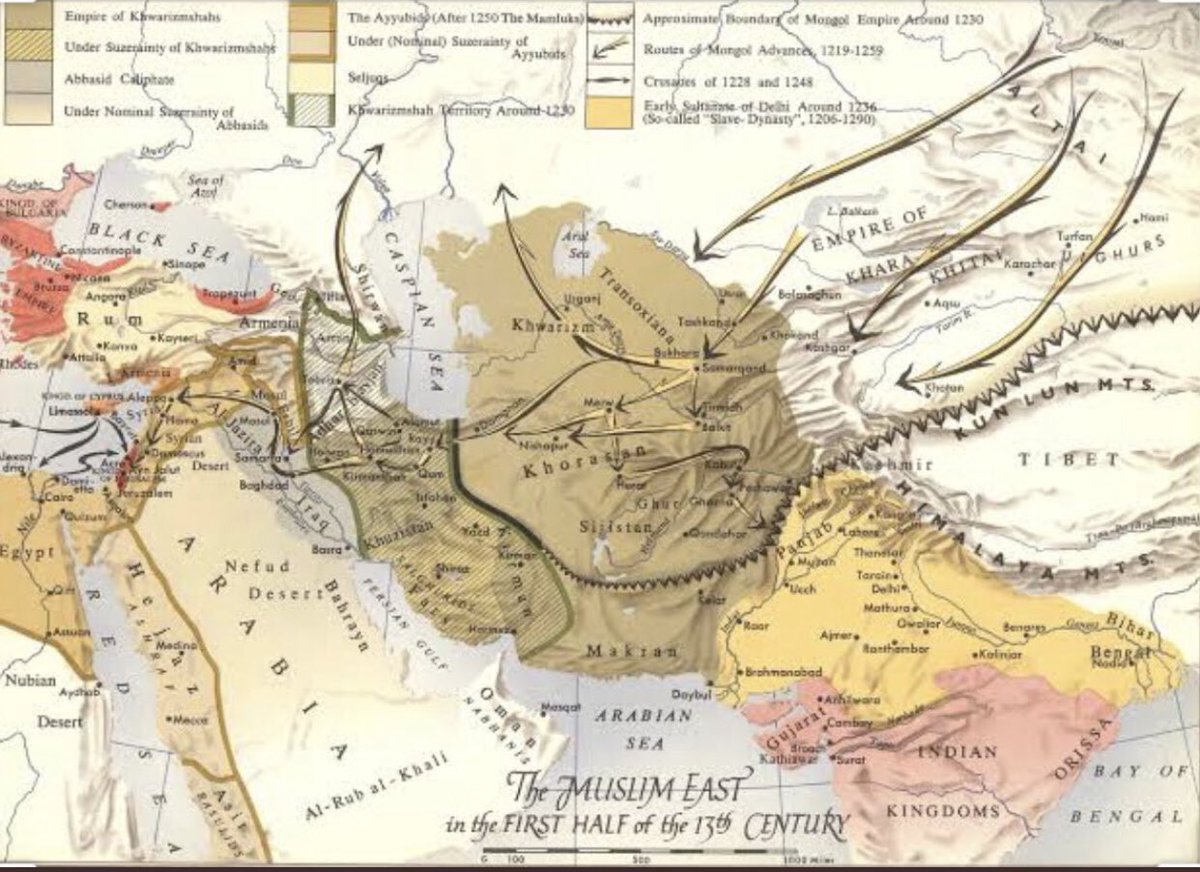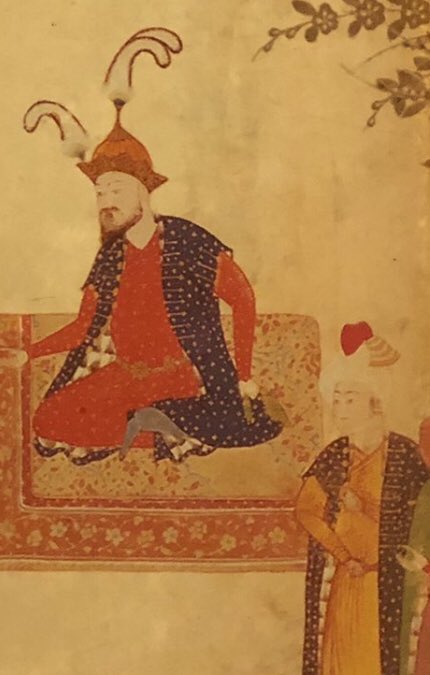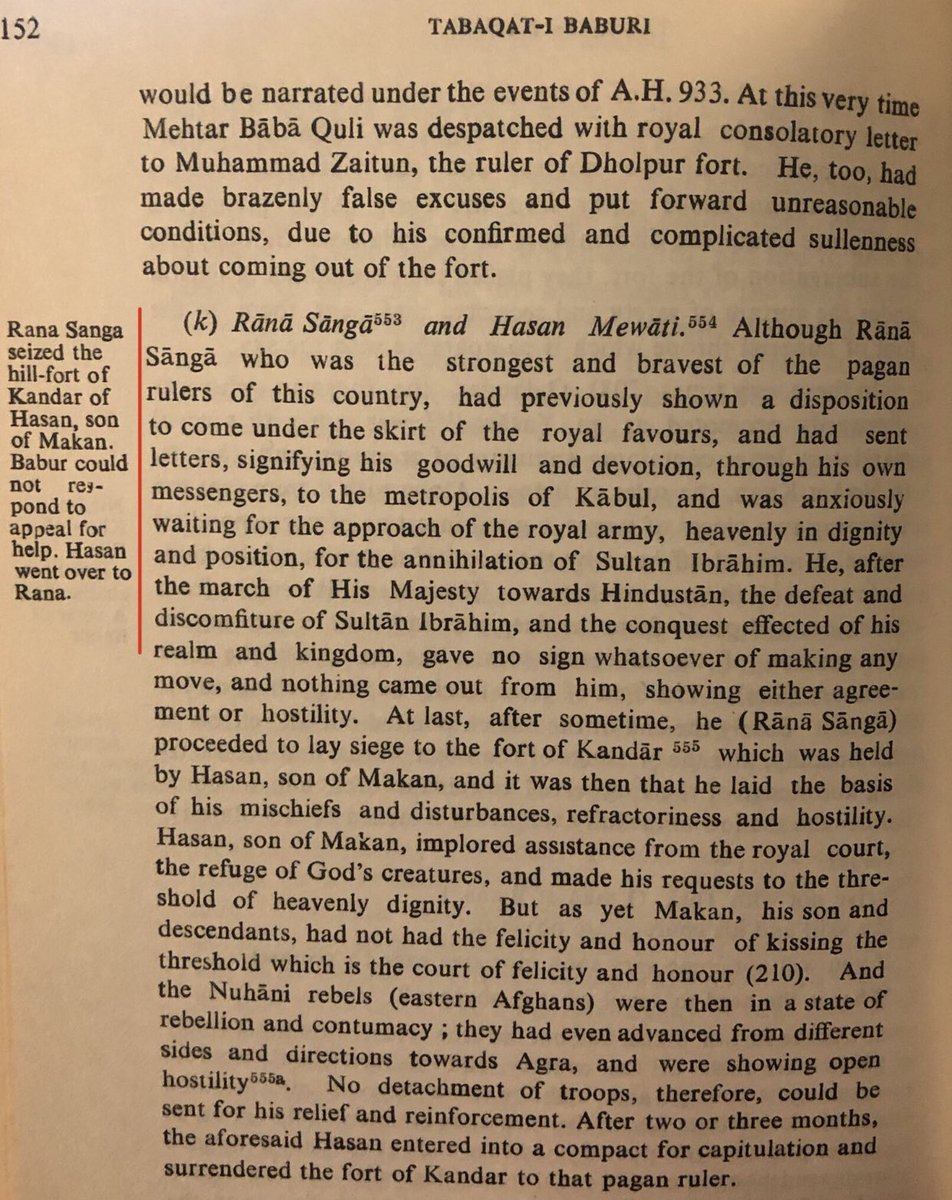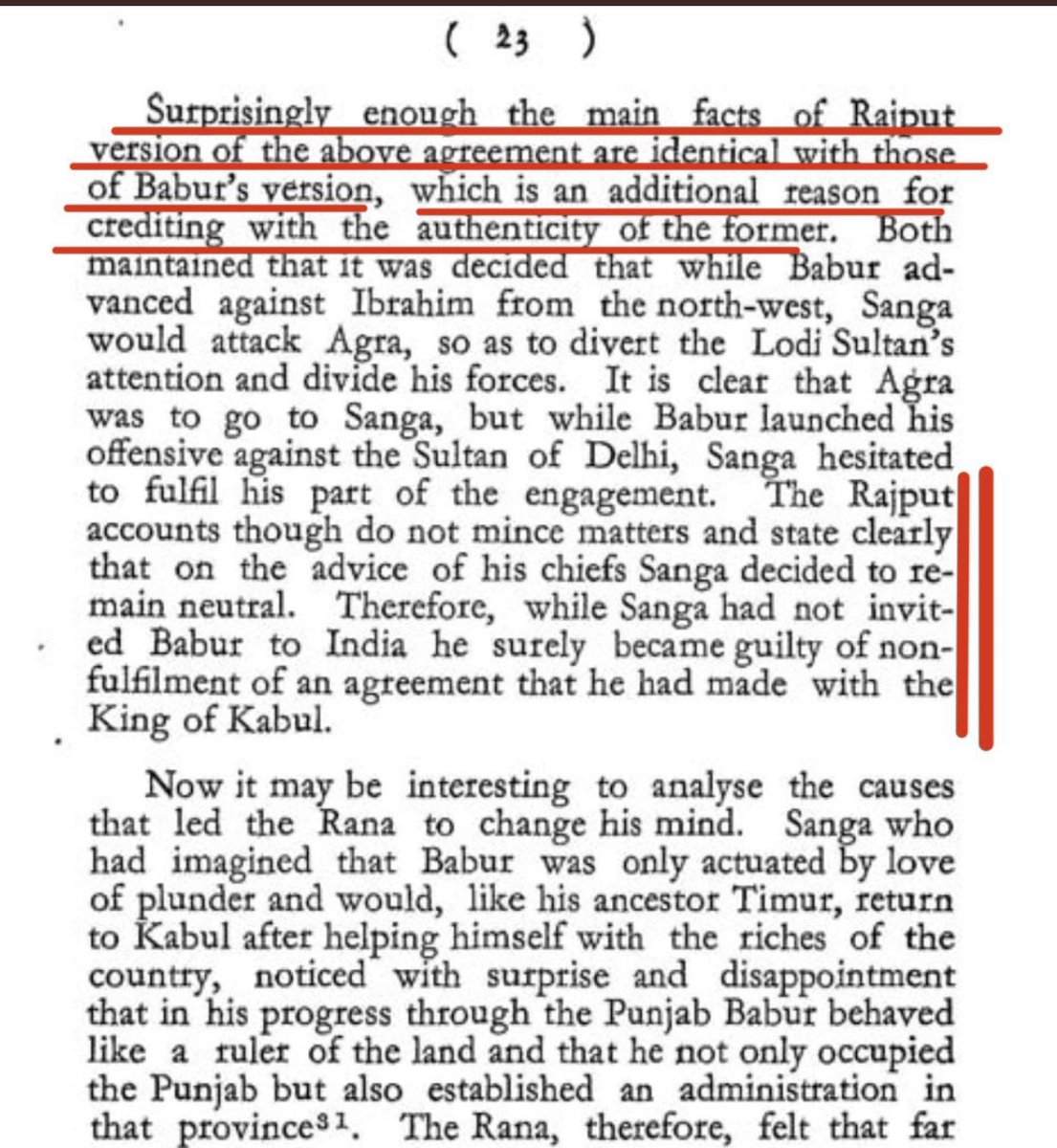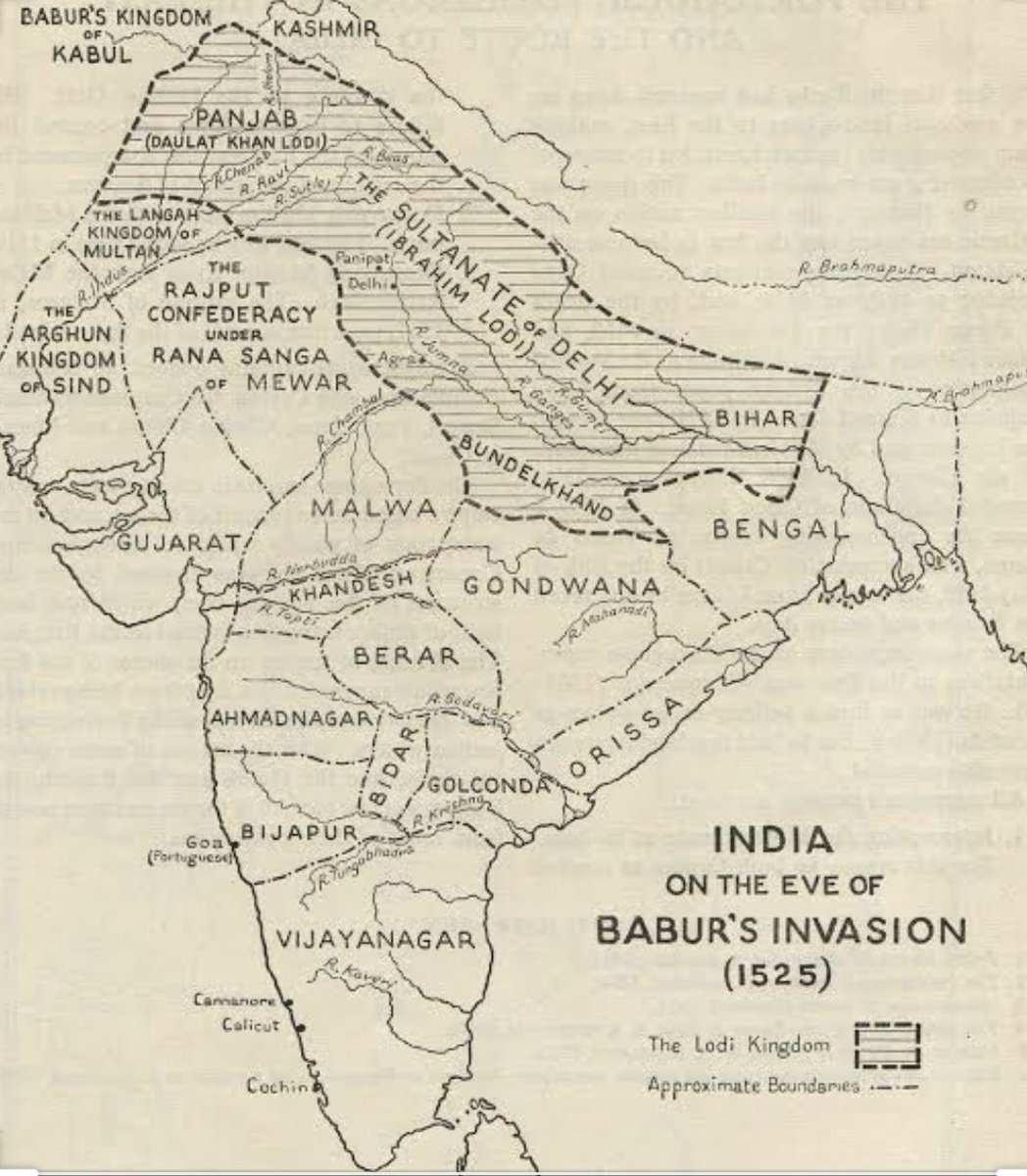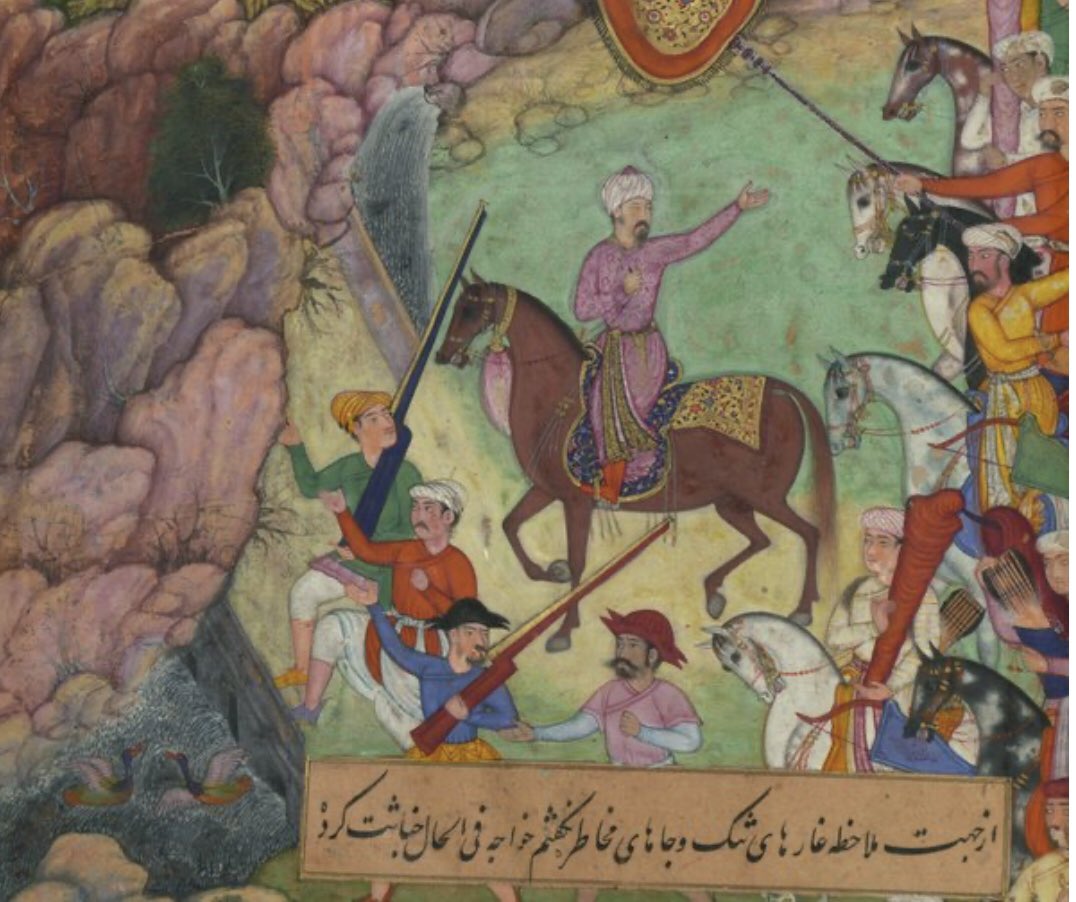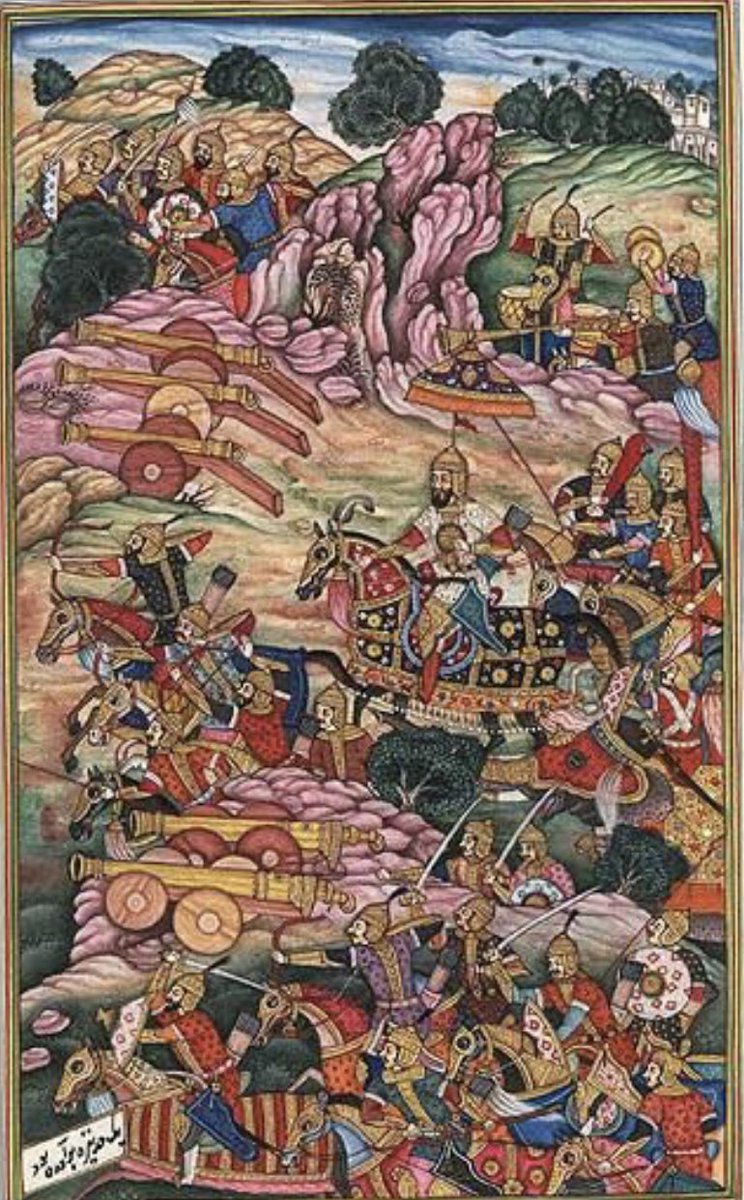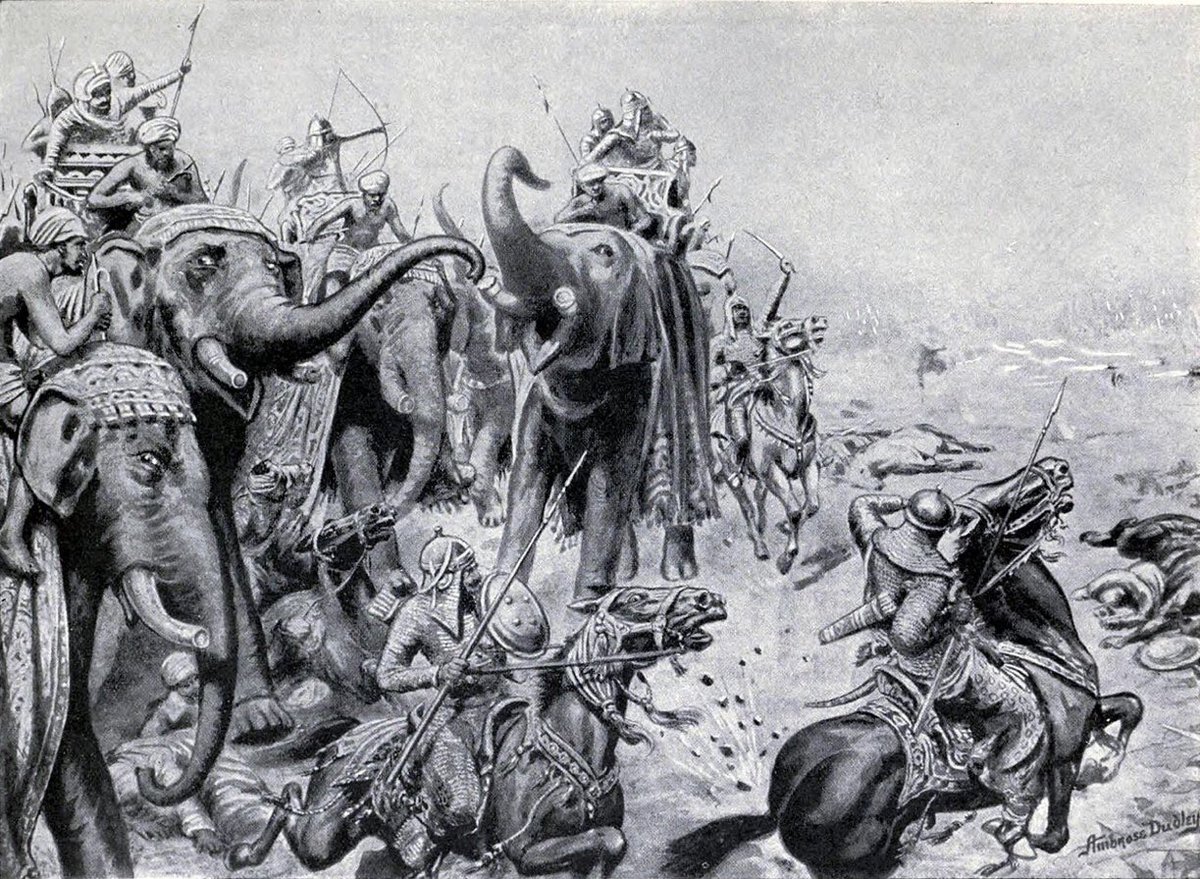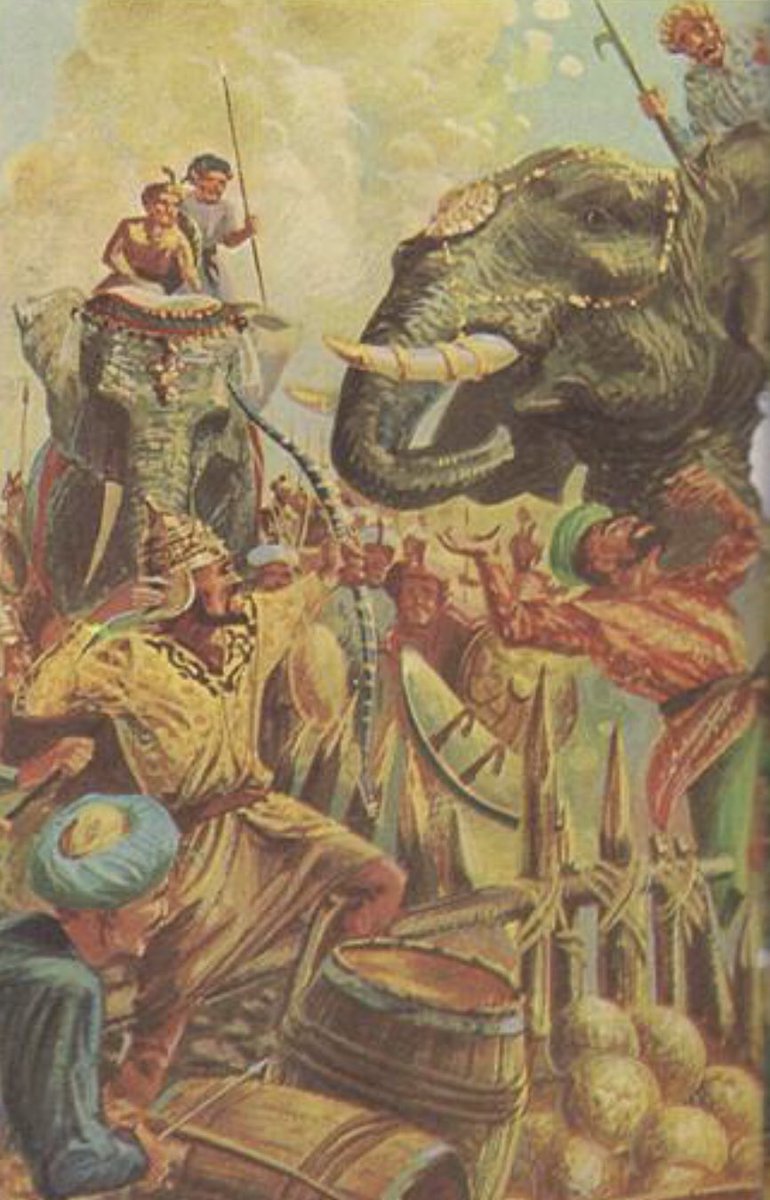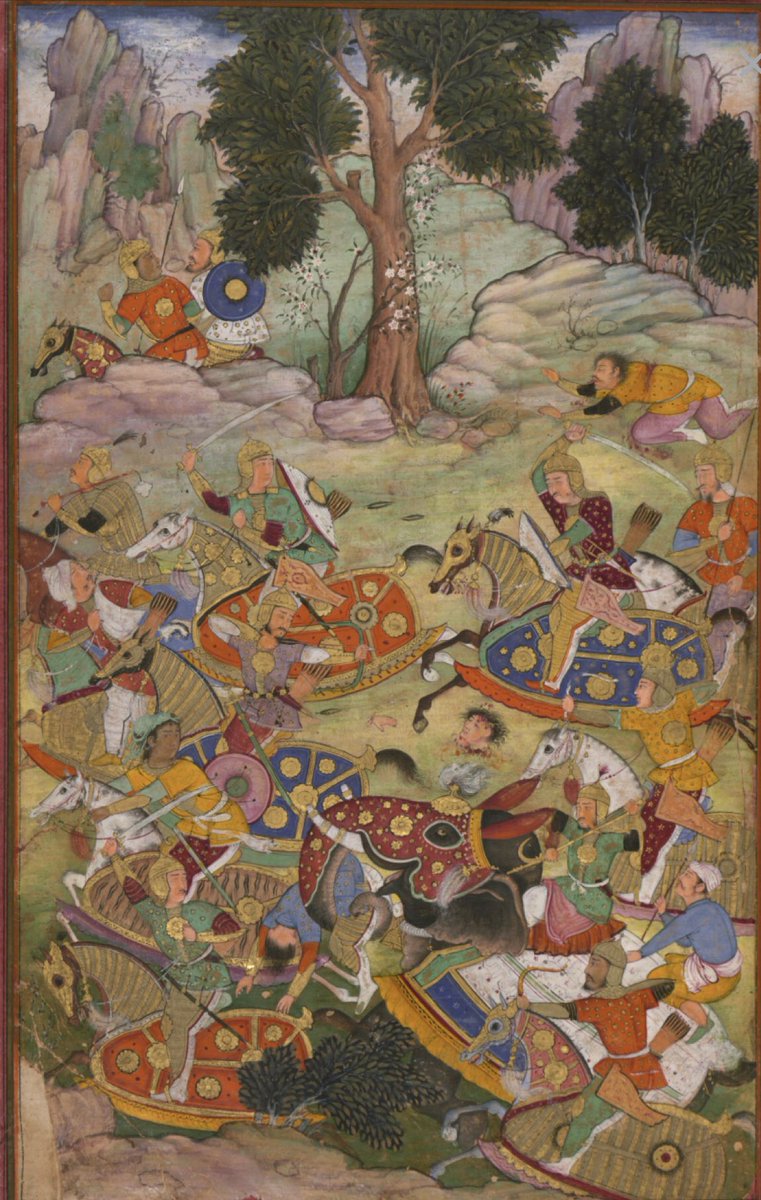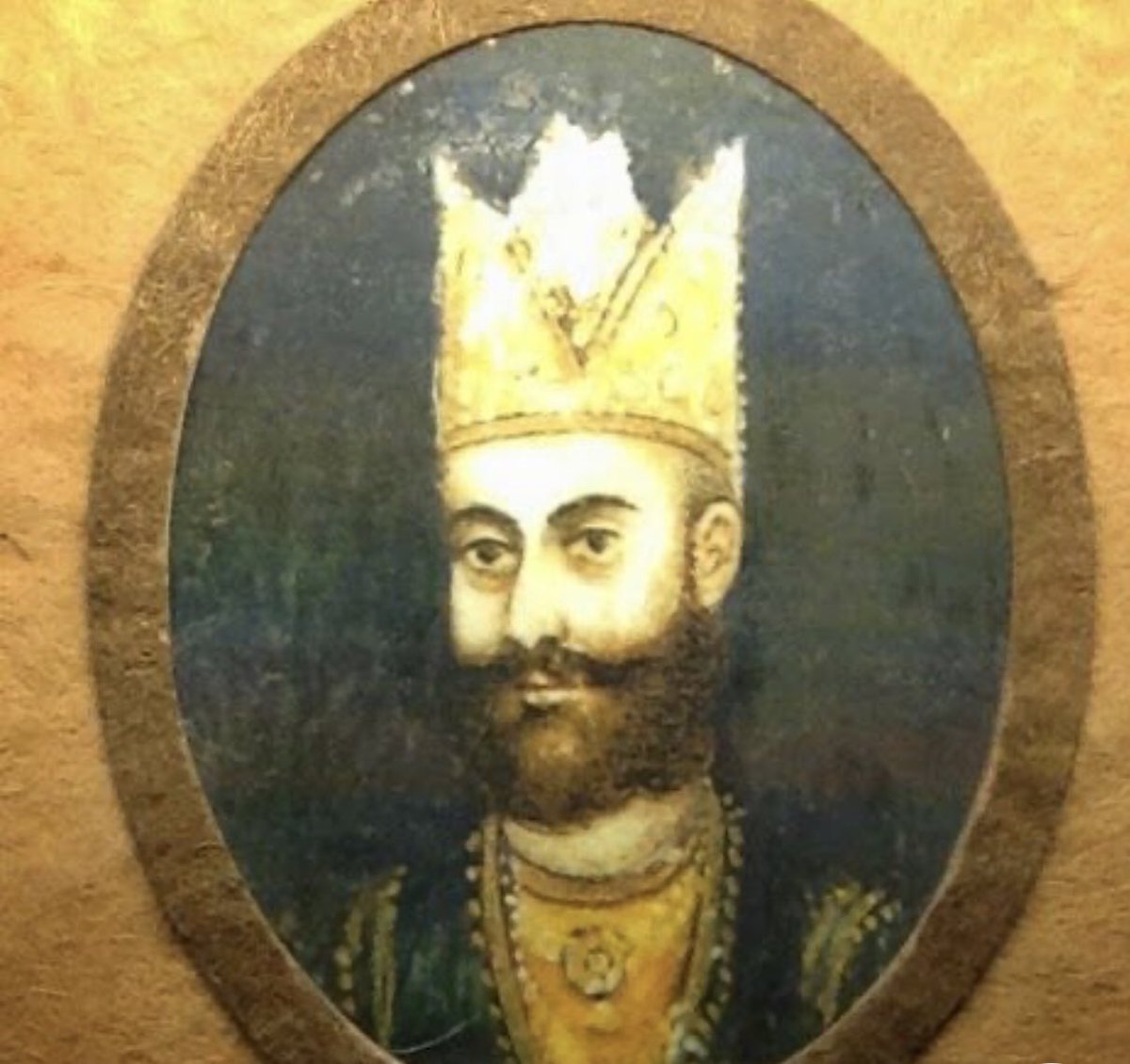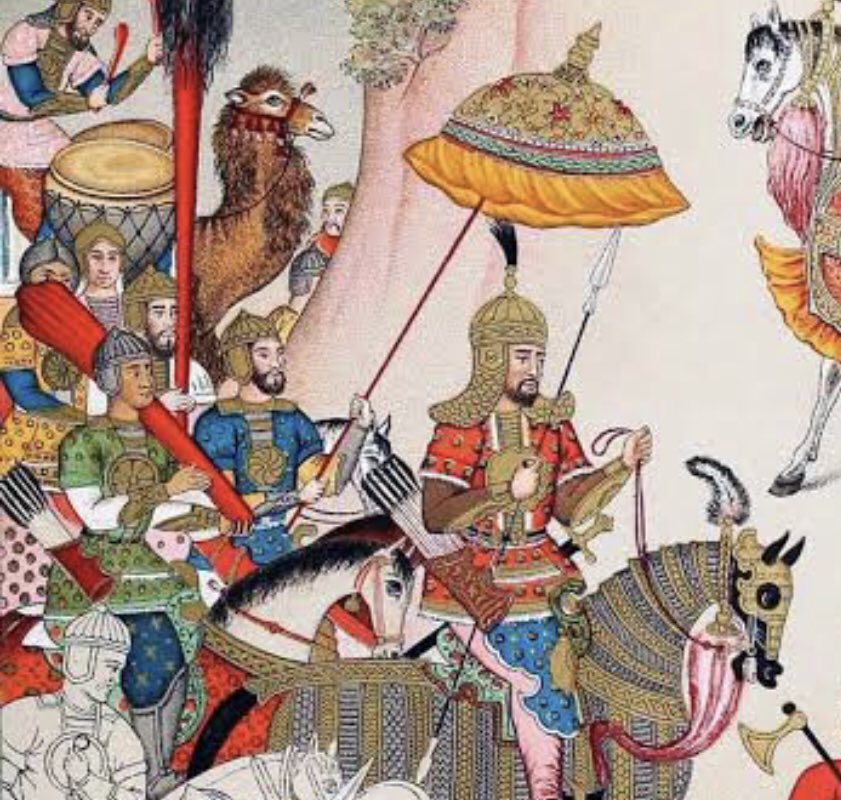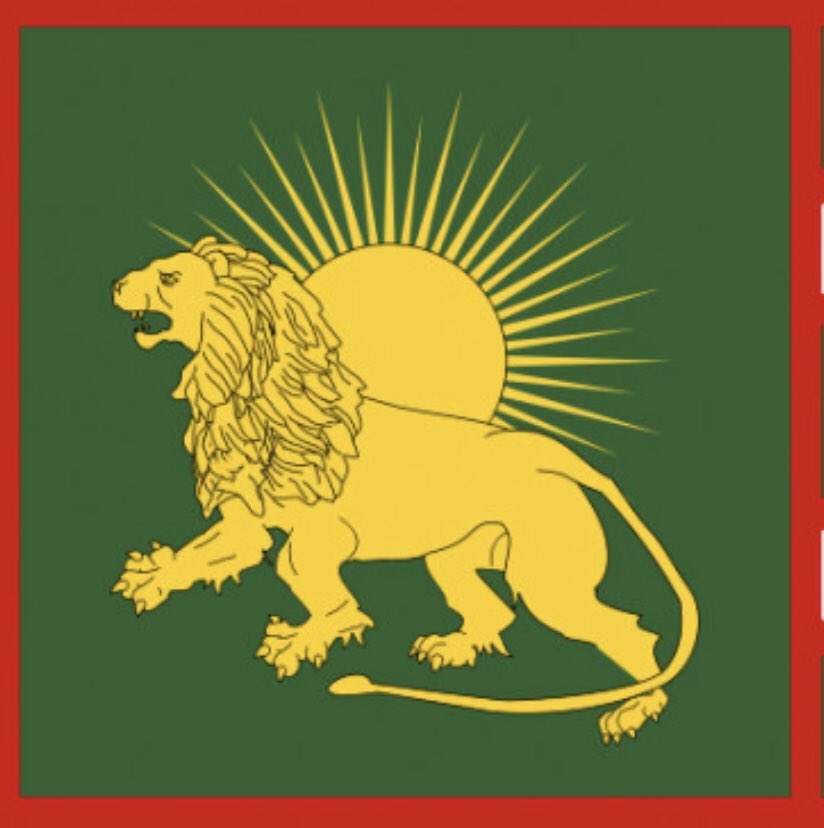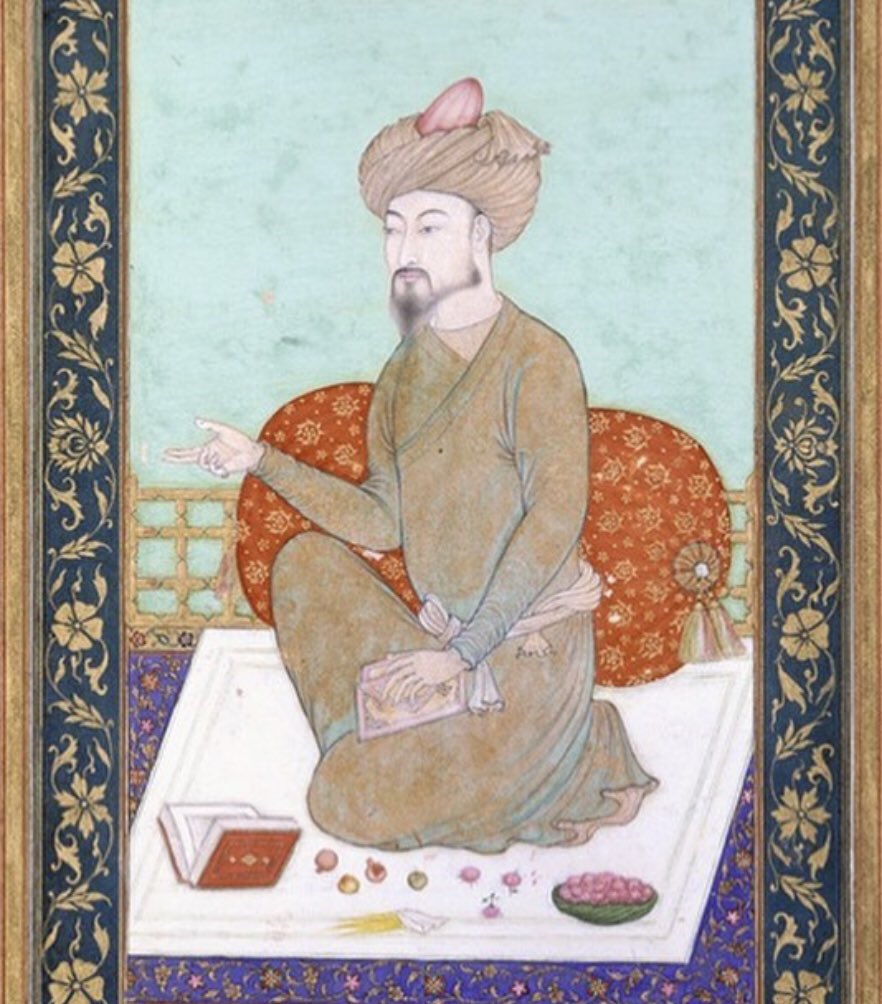Today marks the 495th anniversary of the first Battle of #Panipat, fought between a Timurid army led by Zaheer-ud Din Mohammad #Babur and the Afghan king Ibrahim Lodi.
This engagement had a profound impact on the #history of the Indian sub-continent and Islamicate Asia.
#Mughals
This engagement had a profound impact on the #history of the Indian sub-continent and Islamicate Asia.
#Mughals
The Lodis were the 5th of a succession of Islamic dynasties (collectively known as the Delhi Sultanate) that had ruled Delhi since 1206, for more than 300 years prior to Babur’s advance upon it, in 1526. Until then he had merely raided as far as the frontiers of the Punjab.
#Babur, like other Timurids before him, felt a legitimate claim on Hindustan after its conquest in 1398-99 by Temür, which effectively ended the already tottering Tughlaq Sultanate following the fall of Delhi.
Not until 1451 and the rise of the Lodis, did Delhi recover.
Not until 1451 and the rise of the Lodis, did Delhi recover.
The Baburnāma records Babur’s recurring desire to (re)conquer Hindustan and though entries between 1508 and 1519 are missing, the existing text mentions Rana Sanga, the ruler of Mewar’s invitation to Babur to invade Lodi dominions, (folio 298B), as do other primary sources.
This is further attested by Rajput sources, which - while dismissing claims that the Rana invited the Mughals - confirm that an agreement was made between Rana Sanga and Babur which, the former did not honour.
Source: Dr. GN Sharma ‘Mewar ka Sankshipt Itihas’
Source: Dr. GN Sharma ‘Mewar ka Sankshipt Itihas’
Babur departed Kabul for Hindustan in November 1525 and making his way through the Punjab, arrived on the plains of Panipat in April 1526.
A Lodi advance force had already been defeated by the Mughal vanguard, led by Babur’s eldest son Humayun, then aged 18, near Hissar.
A Lodi advance force had already been defeated by the Mughal vanguard, led by Babur’s eldest son Humayun, then aged 18, near Hissar.
Despite this initial reverse the Lodi army - led by Sultan Ibrahim himself - outnumbered Mughal forces by a ratio of at least 3:1. The Afghans and their allies had the added benefit of fighting on familiar ground; advantages that were off-set by Babur’s superior generalship.
Babur deployed his army of approximately 24-26,000 combatants in formations hitherto unknown to Indian armies, with vanguards, centre, flanks and reserves walled-in by entrenchments and carts bound together.
Immediately within these he placed his musketry and light artillery.
Immediately within these he placed his musketry and light artillery.
Babur kept the town of Panipat to his right and dug a deep trench - with strategic openings - on his left flank. Deploying the Dastur-i Rumi or Byzantine Method, his crack musketmen were secured within the perimeter of carts mentioned earlier. Secure in this position, he waited.
Confident in their numerical superiority, the Lodis began battle with an all out general charge, their famed war-elephants in the lead.
Babur’s position ensured their numbers did not matter as they had to funnel together in a concentrated mass as they approached the Mughal guns.
Babur’s position ensured their numbers did not matter as they had to funnel together in a concentrated mass as they approached the Mughal guns.
Babur then deployed the Tulughamā manoeuvre, a flanking cavalry tactic in which highly trained horse-archers wheeled around, circling the enemy mass, while firing arrows into their masses ranks at speed. This further turned the Afghans into their own centre, creating confusion.
As the Afghan war-elephants approached the Mughal front-lines Babur’s musketmen opened fire into their formations. While artillery did not play as significant a role at Panipat as was previously believed, muskets caused the panic-stricken pachyderms to turn on their own troops.
Hemmed in on their flanks by rapid arrow-fire and peppered by musket shot from ahead, the bulk of the Lodi army did not even make contact with Mughal forces as Babur ordered a counter-attack, forcing the Afghans into a general retreat along their entire front.
Ibrahim Lodi personally refused to retreat and with a handful of his bodyguard fought to the bitter end. His body was found among the dead at the close of a battle, which had turned into a complete rout for Afghan forces and a stunning victory of Mughal arms.
Casualty figures vary for the battle but conservative estimates put Afghan casualties between 15-20,000 killed, their king Ibrahim among them, thus ending 75 years of Lodi rule over Hindustan.
Babur immediately despatched strike forces to Agra & Delhi to secure the Lodi treasury.
Babur immediately despatched strike forces to Agra & Delhi to secure the Lodi treasury.
The first Battle of Panipat, fought on this day in 1526, laid the beginnings of the Mughal Empire in India which - but for a brief interregnum - would last for the next 200 years and finally come to an end in 1859. It’s extent would outgrow even Babur’s most optimistic dreams.

 Read on Twitter
Read on Twitter
